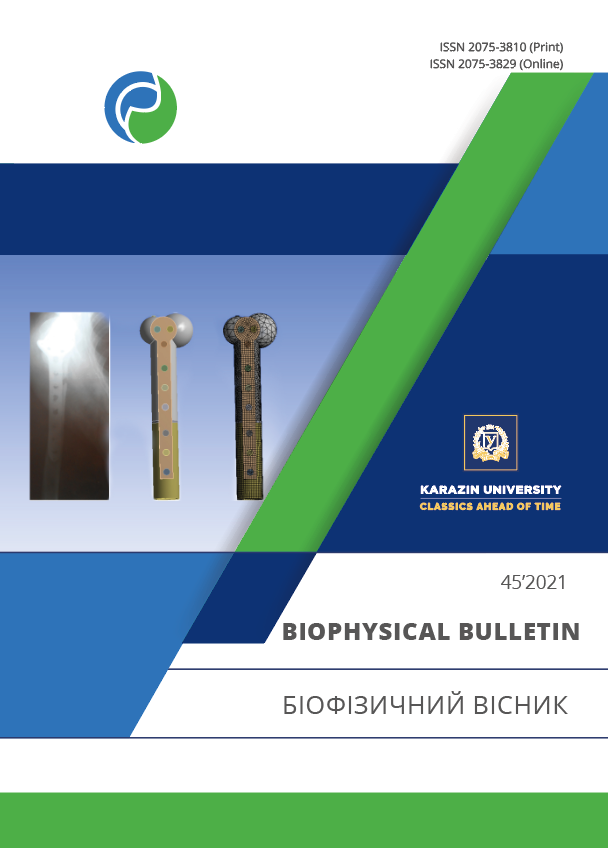Сегментація дентальної рентгенограми при ендодонтичному лікуванні
Анотація
Актуальність. Основою успішного ендодонтичного лікування є правильне визначення робочої довжини кореневого каналу (відстань між зовнішнім орієнтиром на коронці зуба до апікального кордону). Як кордон для обробки і пломбування кореневого каналу рекомендована зона апікальної констрикції (звуження). Внутрішньоротова рентгенограма дозволяє отримати інформацію про напрям вигинів кореневих каналів, а також визначити робочу довжину. Проте рентгенограма є двовимірним сумарним зображенням і не відтворює всю анатомію апікальної частини кореня, тому часто відзначаються нашарування і спотворення зображення. При інтерпретації рентгенограмм існує ймовірність помилки, пов'язаної з суб'єктивністю оцінювального результату спеціаліста. Таким чином, керуватися виключно цим методом визначення робочої довжини недоцільно. Метод апекслокації заснований на різниці електричного опору тканин. Тверді тканини зуба мають більш високий опір ніж слизова оболонка порожнини рота і тканини періодонта. Пристрої для електрометричного визначення робочої довжини кореневого каналу визначають імпеданс за допомогою змінних струмів різної частоти та застосовують метод співвідношення. Цей вимір є стабільним і має високу точність навіть при роботі у вологих каналах та забезпечує плавну візуалізацію всього процесу проникнення верхівки канального інструмента і високу точність визначення місця фізіологічної верхівки кореня (понад 80 %). Сучасні алгоритми для електрометричного визначення робочої довжини кореневого каналу не поєднують дані, що отримуються з рентгенограми. У зв’язку з цим актуальним є розробка нових методів та засобів відображення електрометричних даних на рентгенограмі для більш достовірного визначення місця фізіологічної верхівки кореня.
Мета роботи — розробка методу сегментації дентальної рентгенограми для визначення зони апікальної констрикції.
Матеріали й методи: принципи ендодонтичного препарування зубів; методи визначення робочої довжини кореневого каналу (рентгенологічний, електрометричний); метод порогової сегментації; метод сегментації кісткових структур на томографічних зображеннях.
Результати. В результаті виконаної роботи були сегментовані структури кореневих каналів зуба та визначена їх довжина. Порівняння електронного визначення робочої довжини з радіологічним показало, що в деяких випадках рентгенівська і електронна довжина не збігаються. При латеральному викривленні каналу рентгенівський знімок може показати коротшу робочу довжину, ніж прилади для апекслокації, тому електронна робоча довжина, зазвичай точніша, ніж довжина, визначена рентгенівським способом.
Висновки. Перевагою вимірювання довжини кореневого каналу за допомогою апекслокатора є значно більша точність (близько 0,5 мм) в порівнянні з методом рентгенографії, однак більш достовірним може бути поєднання цих двох методів, що потребує подальших статистичних досліджень. Особливу увагу при цьому слід приділити особливостям методів обробки та сегментації отриманих діагностичних зображень для забезпечення максимальної якості візуалізації контурів кореневих каналів.
Завантаження
Посилання
Kovetskaya EE. Methods for determining the working length of the root canal. Modern dentistry. 2006;3:35–9 Available from: http://www.mednovosti.by/journal.aspx?article=2740. (In Russian).
Kovetskaya EE. Comparative evaluation of the effectiveness of methods for determining the working length of the root canal. Modern dentistry. 2006;4:11–3. Available from: http://www.mednovosti.by/journal.aspx?article=2758. (In Russian).
Latysheva SV, Abaimova OI, Bondarik EA. Basic principles of endodontic tooth preparation. Dental journal. 2003;2:2–6. (In Russian).
Propex Pixi® apex locator. User manual [Internet]. Dentsply Sirona; 2021 [cited 22 May 2021]. Available from: https://www.dentsplysirona.com/content/dam/dentsply/pim/manufacturer/Endodontics/Motors__Apex_Locators/Apex_Locators/Propex_Pixi/PROPEX%20PIXI%20EUROP_DFU_1018_MASTER_DSE_EN.pdf
Krainov SV, Popova AN, Firsova IV. Evaluation of the effectiveness of the electrometric method for determining the working length of the root canal using the example of the NovApex apex locator. Topical issues of modern dentistry: Proceedings of the Conference; 2010; Volgograd: OOO Blank; 2010. p. 248. (In Russian).
Silva G, Oliveira L, Pithon M. Automatic segmenting teeth in X-ray images: Trends, a novel data set, benchmarking and future perspectives. Expert Systems with Applications. 2018;107:15–31. https://doi.org/10.1016/j.eswa.2018.04.001
The MathWorks, Inc. Image Processing Toolbox [Internet]. [cited 2021 Aug 02]. Available from: https://www.mathworks.com/products/image.html
Shamraeva EO, Avrunin OG. Construction of models of cranial implants based on radiographic data. Applied radio electronics. 2005:4(4):441–3. Available from: https://openarchive.nure.ua/bitstream/document/5456/1/Pricladn_radioel-2005_T1-rus-67-69.pdf (In Russian).
Avrunin OG, Tymkovych MY, Moskovko SP, Romanyuk SO, Kotyra A, Smailova S. Using a priori data for segmentation anatomical structures of the brain. Przegląd elektrotechniczny. 2017;1(5):102–5. https://doi.org/10.15199/48.2017.05.20
Shamraeva, EO, Avrunin OG. Choice of a method for segmentation of bone structures on tomographic images. Bionics of intelligence: information, language, intelligence. 2006;65:83–7. (In Russian).
Avrunin OG. Visualization of the upper respiratory tract according to computed tomography. Radio electronics and informatics. 2007;4:119–22. Available from: https://cyberleninka.ru/article/n/vizualizatsiya-verhnih-dyhatelnyh-putey-po-dannym-kompyuternoy-tomografii/pdf (In Russian).
Ingle J, Bakland L, Baumgartner J. Endodontics. Hamilton, Ontario; Lewiston, NY: BC Decker, 2008.
Solovyova AM. Features of conservative endodontic treatment for chronic periodontitis in teeth with incomplete root formation. Children's dentistry (Pediatric dentistry and dental profilaxis). 2000;1–2:79–83. (In Russian).
Khomenko LA, Bidenko NV. Practical endodontics. Tools, materials and methods. Moscow: Kniga Plus; 2005. 224 p. ISBN: 5-93268-003-2. (In Russian).
Mounce R. Determination of the true working length. Journal of Endodontics. 2007;43(1):17–19.
Shchapov PF, Avrunin OG. Obtaining information redundancy in measuring control systems and diagnostics of measuring objects. Ukrainian metrological journal. 2011;1:47–50. (In Ukrainian).
Avrunin OG, Bodyansky EV, Kalashnik MV, Semenets VV, Filatov VO. Modern intelligent technologies of functional medical diagnostics. Kharkiv: Press of the Kharkiv National University of Radioelectronics; 2018. 236 p. https://doi.org/10.30837/978-966-659-234-0. (In Ukrainian).
Автори, які публікуються у цьому журналі, погоджуються з наступними умовами:
- Автори залишають за собою право на авторство своєї роботи та передають журналу право першої публікації цієї роботи на умовах ліцензії Creative Commons Attribution License, котра дозволяє іншим особам вільно розповсюджувати опубліковану роботу з обов'язковим посиланням на авторів оригінальної роботи та першу публікацію роботи у цьому журналі.
- Автори мають право укладати самостійні додаткові угоди щодо неексклюзивного розповсюдження роботи у тому вигляді, в якому вона була опублікована цим журналом (наприклад, розміщувати роботу в електронному сховищі установи або публікувати у складі монографії), за умови збереження посилання на першу публікацію роботи у цьому журналі.
- Політика журналу дозволяє і заохочує розміщення авторами в мережі Інтернет (наприклад, у сховищах установ або на особистих веб-сайтах) рукопису роботи, як до подання цього рукопису до редакції, так і під час його редакційного опрацювання, оскільки це сприяє виникненню продуктивної наукової дискусії та позитивно позначається на оперативності та динаміці цитування опублікованої роботи (див. The Effect of Open Access).





